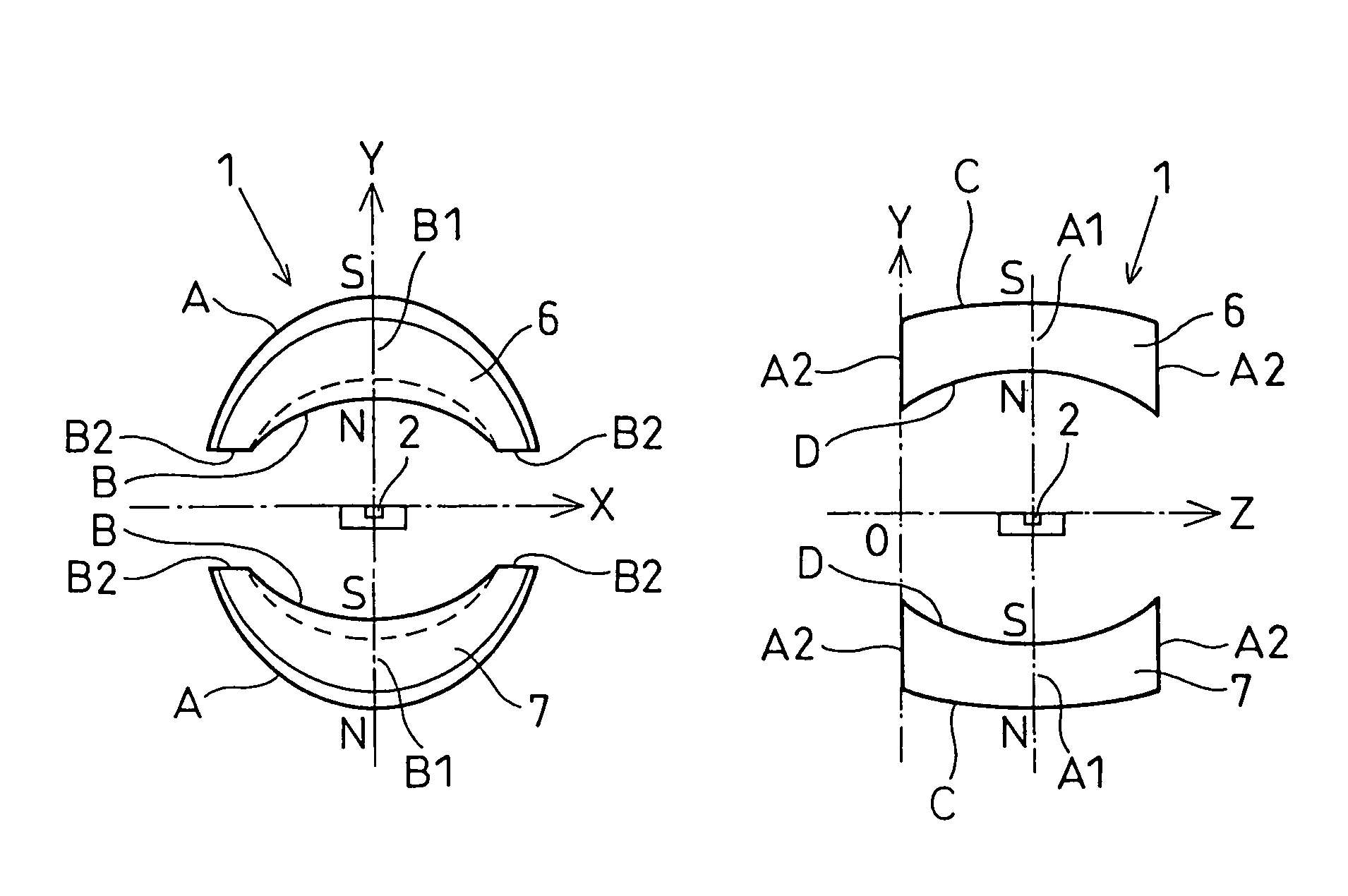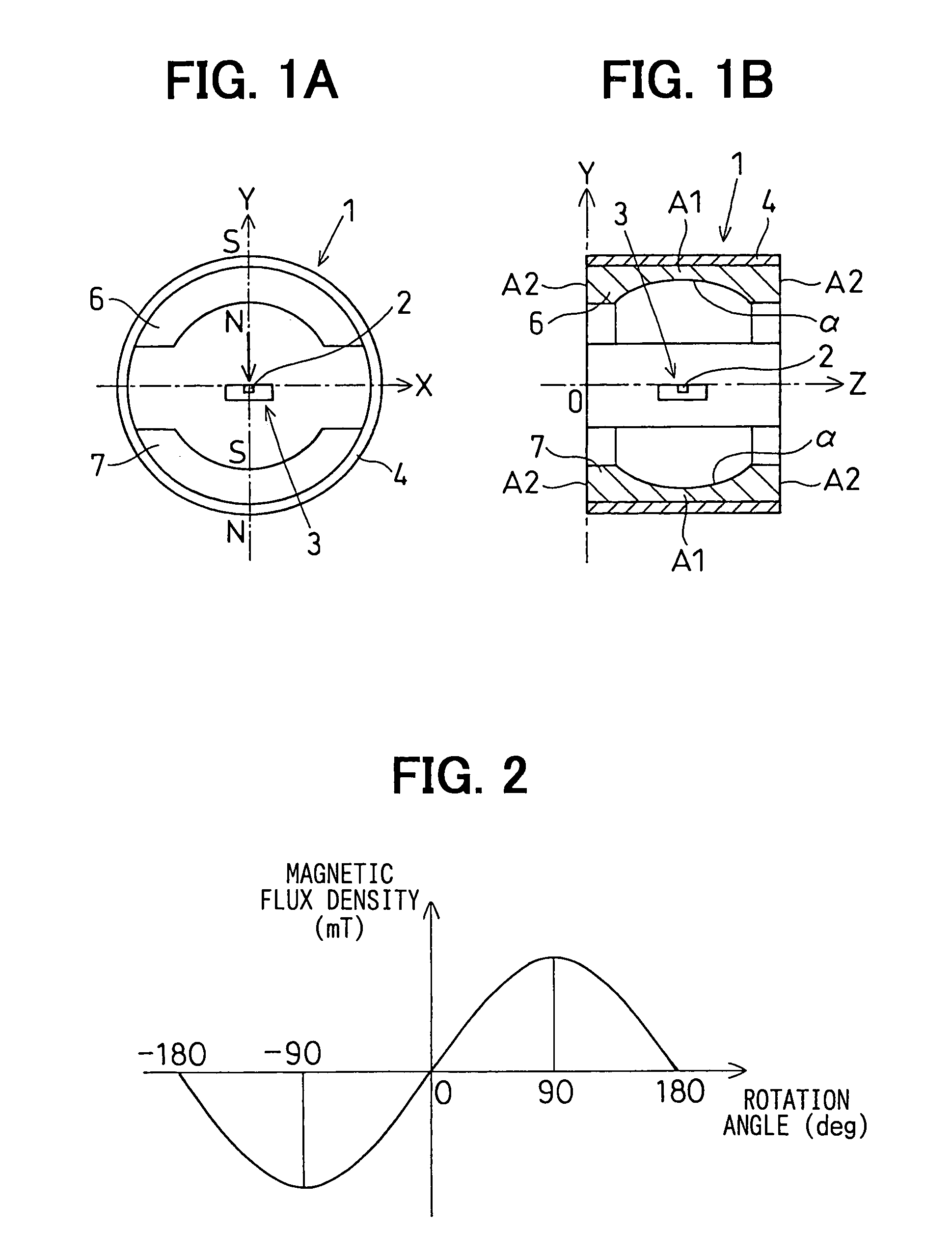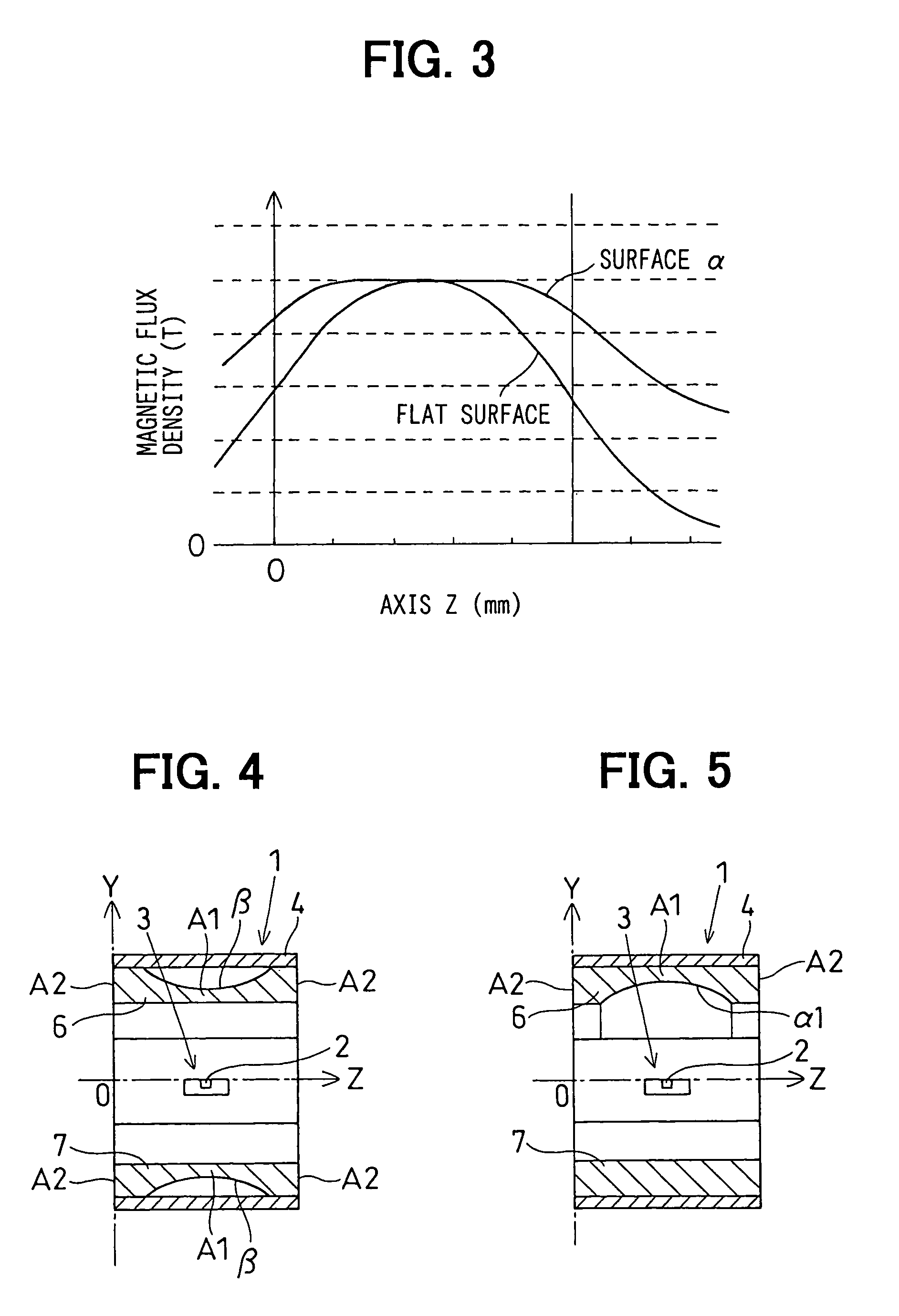Rotation angle detecting device including magnetic member with concave surface
a magnetic member and detecting device technology, applied in galvano-magnetic devices, galvano-magnetic hall-effect devices, instruments, etc., can solve the problems of not being able to the magnetic sensor element cannot detect an accurate rotation angle when a rotary object rotates, so as to prevent detection errors and prevent detection errors
- Summary
- Abstract
- Description
- Claims
- Application Information
AI Technical Summary
Benefits of technology
Problems solved by technology
Method used
Image
Examples
first embodiment
[0043]A rotation angle detecting device according to the invention will be described with reference to FIGS. 1–3.
[0044]The rotation angle detecting device according to the first embodiment is to be used for detecting rotation angle of a throttle valve of an internal combustion engine. The rotation angle detecting device includes a rotor 1, a hall IC 3 in which a hall element 2 is integrated.
[0045]The hall IC 3 is supported by a stationary member so that the hall element 2 is positioned on the center axis z of the rotor 1. The hall IC 3 is a well-known type, which includes a signal processing circuit as well as the hall element 2. The hall IC 3 has a magnet sensing surface that provides a signal according to a magnetic flux density in the direction perpendicular to the magnet sensing surface. That is, as shown in FIG. 2, the magnetic flux density sensed by the hall IC 3 becomes maximum when the rotor 1 is positioned as shown in FIG. 1A, and minimum when the rotor 1 rotates 90 degrees...
second embodiment
[0048]The rotation angle detecting device 1 has a pair of permanent magnets each of which has a circumferentially extending rut-shaped concavity β at its radially outer surface. Therefore, each of the permanent magnets 6, 7 has a minimum radial thickness at the axially central portion A1 thereof around the hall element 2 in the axial direction z. The concavity β is formed so that the magnetic flux density of the magnetic flux flowing through the magnet sensing surface becomes constant even if the hall element shifts a little in the axial direction z.
third embodiment
[0049]A rotation angle detecting device according to the invention will be described with reference to FIG. 5.
[0050]The rotation angle detecting device 1 according to the third embodiment has a pair of permanent magnets 6, 7. However, one of the permanent magnets has a circumferentially extending rut-shaped concavity α1 at its radially inner surface. Therefore, the permanent magnet 6 has a minimum radial thickness at the axially central portion A1 thereof around the hall element 2 in the axial direction z. The concavity α1 is formed so that the magnetic flux density of the magnetic flux flowing through the magnet sensing surface becomes constant even if the hall element shifts a little in the axial direction z.
PUM
 Login to View More
Login to View More Abstract
Description
Claims
Application Information
 Login to View More
Login to View More - R&D
- Intellectual Property
- Life Sciences
- Materials
- Tech Scout
- Unparalleled Data Quality
- Higher Quality Content
- 60% Fewer Hallucinations
Browse by: Latest US Patents, China's latest patents, Technical Efficacy Thesaurus, Application Domain, Technology Topic, Popular Technical Reports.
© 2025 PatSnap. All rights reserved.Legal|Privacy policy|Modern Slavery Act Transparency Statement|Sitemap|About US| Contact US: help@patsnap.com



